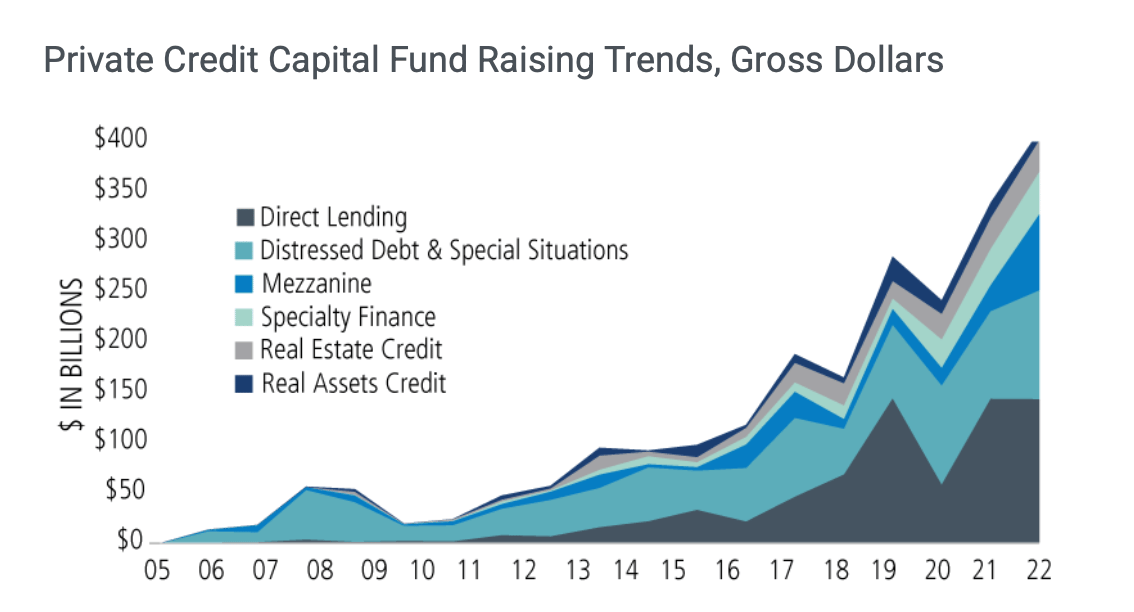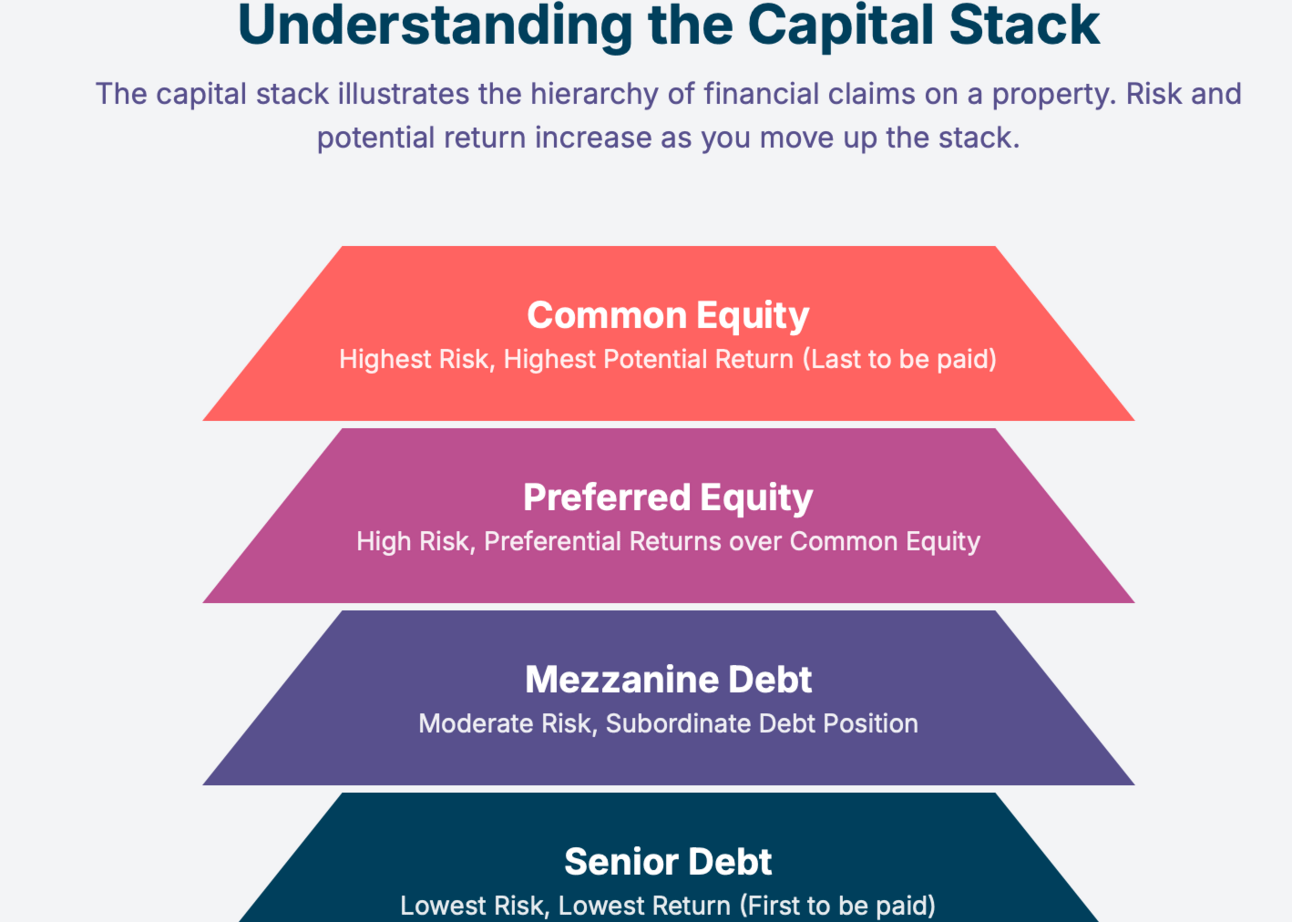- Real Estate Observer
- Posts
- Real Estate Private Credit
Real Estate Private Credit
And what questions should you ask on your search for cash flow/current yield?
Real estate private credit is experiencing significant investor interest among LPs & those seeking real estate exposure without the full risk profile of common equity investments.
I still believe there to be opportunity in common equity and I’ll continue to place dollars there, but there is certainly an appeal for RE private credit. It typically produces 8-14% annually while keeping a more conservative position through debt or preferred structures. That’s the idea anyways.
We're seeing great opportunity in gap funding and select recapitalization type situations. I don’t have much desire for distressed or rescue capital type funds, like the ones discussed in more detail here. This is something to look out for when considering these types of private credit funds.
The challenge ahead: as capital floods into the space, we should expect both return compression and potentially relaxed underwriting standards so it will be super important to understand what questions to ask when evaluating a real estate private credit fund as they are not all created equal.

Why Private Credit now?
Higher current income, thereby not relying on future compensation as much
More stable than cash flow from equity investments
Better position within capital stack. Decent return for sometimes low risk, depending on the fund.
High interest rates are making credit more attractive
People are being extremely selective on common equity investments, but that capital has to go somewhere!

Many real estate private credit funds lend preferred equity or mezzanine debt and therefore are in a more favorable position within the capital stack relative to the common equity. This means they will get paid back before the common equity starts to see their return of capital.

Typical Capital Stack Hierarchy (from bottom/lowest risk to top/highest risk):
Senior Debt: This forms the base layer of the capital stack, representing the lowest risk. It is secured by the property itself, meaning senior debt holders are the first to be repaid from property income or liquidation proceeds. In cases of underperformance, senior lenders can foreclose on the property to recoup their investment. Returns for senior debt holders are typically the lowest in the stack, reflecting their minimal risk.
Mezzanine Debt: Positioned above senior debt, mezzanine debt carries a moderate level of risk. It is typically secured by an interest in the entity that owns the real property rather than a direct lien on the property itself.
Preferred Equity: This layer sits above mezzanine debt and carries a higher risk than debt but offers more consistent returns than common equity due to its preferential payment rights.
Common Equity: At the very top of the stack, common equity represents the riskiest investment layer. It includes the sponsor's and other equity investors' stakes. Common equity holders are the last to be paid, receiving returns only after all debt and preferred equity obligations are satisfied. However, this position also offers the highest potential for returns.
An example of an opportunity that is happening quite a bit in today’s market. A buyer wants to take advantage of the seller’s debt:4 years remaining
3.9% interest rate
$500,000 is left on the note
The property is worth $1,000,000, resulting in the buyer having 50% LTV if they assume the loan. The borrower can either bring 50% of the equity or they could go to a private credit fund and ask that they lend 20% or $200,000 at 14% interest.
The 14% is still cheaper/easier than common equity for the borrower, and still relatively low risk for the lender. The lender’s last dollar exposure is at 70% LTV, meaning the value of the property would have to drop 30% from where it is “today” before the principal balance of the loan would be impacted.
Critical Questions for Limited Partners to AskFund Strategy
What specific types of real estate credit does the fund target (senior debt, mezzanine, bridge loans, construction financing)?
Construction financing is going to be more risky than most mezzanine positions. Make sure that the fund you’re considering actually specializes in something.
What geographic markets and property types are prioritized? Are there limits? We don’t want a fund manager who can go get excited about the office in Alaska all of a sudden.
What is the target loan-to-value ratio and typical deal size?
Target and current DSCR? This is testing and understanding how fragile that “stable” cash flow is.
How does the fund source deals and what is their competitive advantage?
Risk Management and Underwriting
What is the fund's underwriting process and credit standards?
How do they stress test deals against market downturns?
Origination platform and deal flow consistency. Can they continue to deploy capital? Cash drag is real.
Track Record and Performance
What is the manager's experience through different real estate cycles?
Why is the fund manager choosing now to launch a private credit fund? Make sure it’s not because they are trying to rescue their own deals.
What are the historical default rates and loss rates?
What is their experience with loan modifications and workouts? I’d look for a fund manager who can takeover an asset and operate it until a successful sale.
Liquidity and Terms
What is the fund's liquidity profile and redemption terms?
What are the total fees (management fees, performance fees, other expenses)?
How long is the investment commitment period?
Alignment of interests through co-investment and market fee structures
Reply